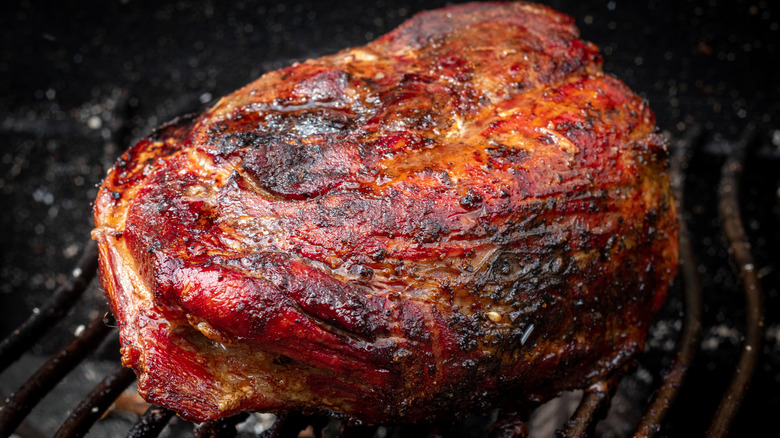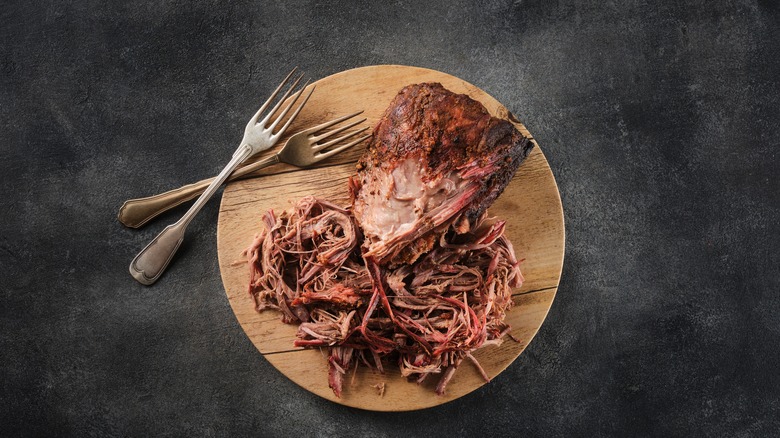The Best Wood To Use When Smoking Pork Shoulder Or Pork Butt, According To A Celebrity Chef
Whether you're trying to put together a pulled pork sandwich or you're piling pork on top of nachos, one clear path to the most mouthwatering results is smoking the meat. But, your choice of wood is key to creating the perfect flavor profile. From oak or pecan to apple or cherry, there's no shortage of options. So, to find out which wood works best for smoking pork shoulder or pork butt, we reached out to Robbie Shoults, celebrity chef and third-generation owner of Bear Creek Smokehouse.
"In our business, hickory wood cut right from the farm is the one that brought us to the dance, and after 80 years in business, is still the one I would recommend for pork," Shoults said, adding, "Hickory wood chips and pellets are readily available everywhere."
Using hickory to smoke the pork will impart both sweet and smoky notes that are stronger than you'd achieve with other types of wood like apple or cherry. And, while the smokiness will shine through, it won't overpower the mild meat like a mesquite might. Another advantage to using hickory is that it tends to burn evenly, which can make it easier to achieve the perfectly juicy end result you're after. Plus, if you're looking for that dark bark on your pork, hickory can help you achieve that, too.
Tips for the best smoked pork
While using hickory has the potential to create the best pulled pork, you can also combine it with other types of wood. For a flavor profile that's not quite as strong, you can try mixing in apple or oak. If additional sweetness is what you're searching for, cherry, apple, or pecan are all solid options.
Outside of the wood you use, one of the most important parts of the process of smoking pork is to ensure that you keep the smoker at an even temperature while it slowly cooks the meat. The recommended temperature for smoking pork shoulder or pork butt is 225 degrees Fahrenheit. For the best results, try investing in some of the latest BBQ accessories that will help you achieve perfectly smoked food, like a wireless meat thermometer that means you don't need to babysit the meal while it cooks.
Finally, once the meat has reached an internal temperature between 195 and 204 degrees Fahrenheit, allow it to rest. Ideally, it should rest for just shy of two hours before shredding to ensure it's as juicy as possible, but if you're crunched for time, you can reduce that to as little as 45 minutes. When it comes time to shred, achieve the best texture by using your hands instead of kitchen tools. Then simply mix the drippings into the shredded meat and serve it with your favorite BBQ sides.


